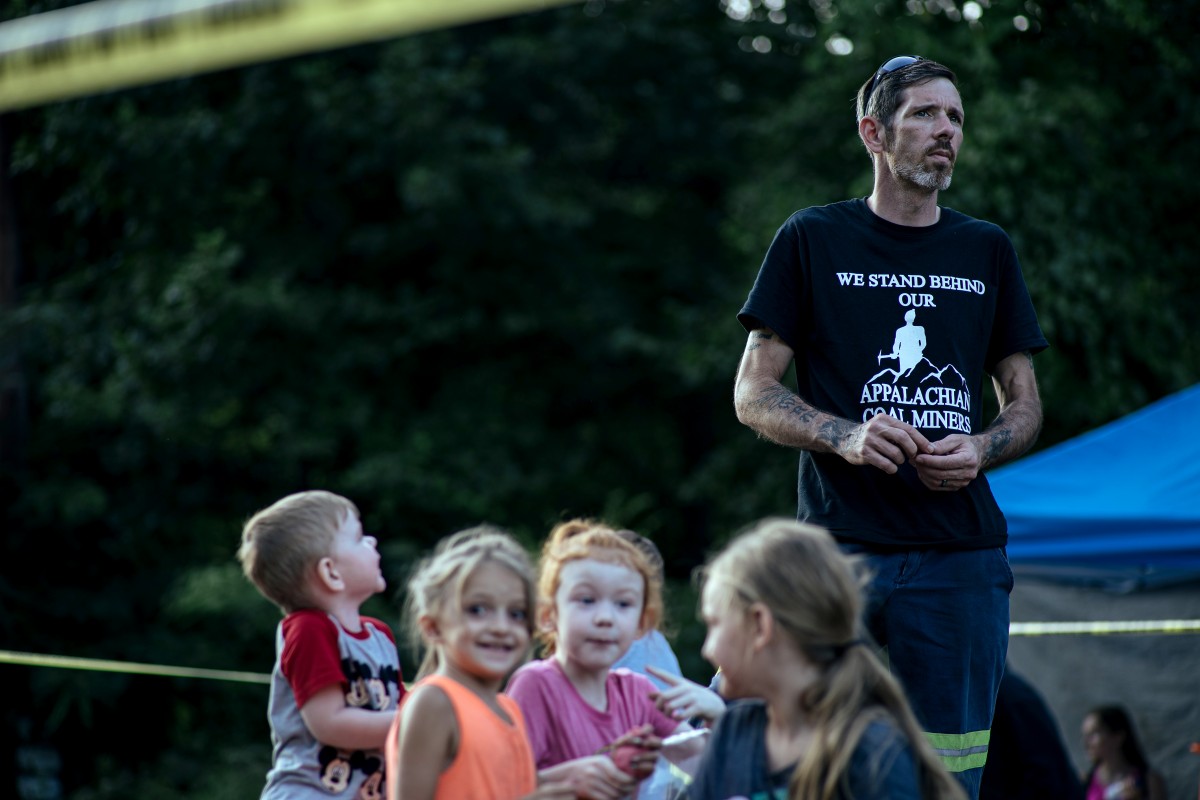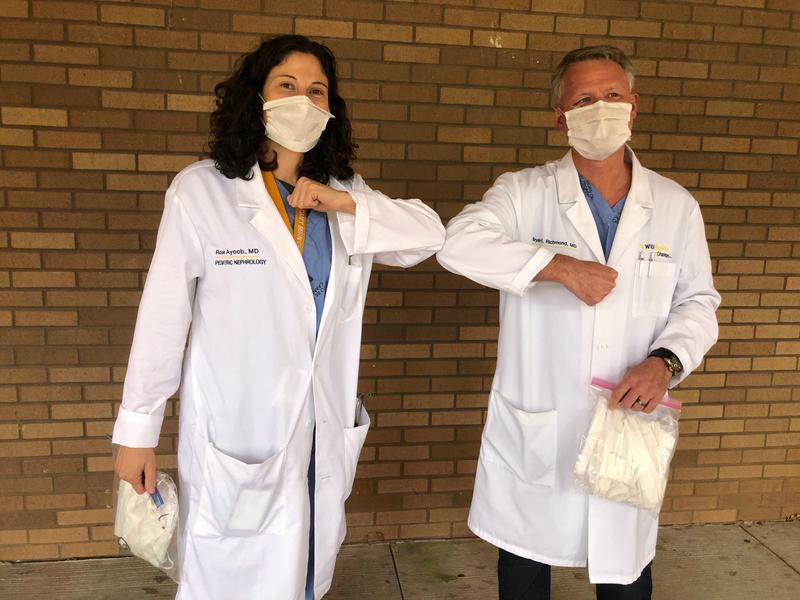Repurposing rural hospitals that have closed in recent years could serve as a safety valve for urban hospitals if they are overrun with coronavirus patients.
An official at the Centers for Disease Control and Prevention (CDC) mentioned shuttered rural hospitals during a March 23 presentation on the rural healthcare response to the coronavirus.
“When rural communities are planning their response to the pandemic, they might want to consider re-opening hospitals that have closed,” said Dr. Jay Butler, deputy director for infectious disease at the CDC. “If the building can still be occupied, it can be re-opened to offer low-level care.”
Butler made his comments on a webinar for rural CDC partners.
Brock Slabach, senior vice president for member services with the National Rural Health Association, said in a separate interview with the Daily Yonder that opening closed hospitals might be a quicker and more efficient way to increase hospital capacity.
“The way I took that [comment] was before we start considering putting up new hospitals or having the Army Corps of Engineers come in and build new structures, we have empty hospitals that could be re-opened with much less pain,” Slabach said. “Assuming the structures are sound, we could open them and use them. They would already be equipped with the necessary gas lines and other needed fixtures.”
Slabach said he wasn’t sure about what regulations would have to be addressed to open a closed hospital, but he assumed that it would require the government to contact the owner of the hospital, negotiate a lease on the property for a short period of time and work from there.
Tennessee Governor Bill Lee said the state will use closed rural hospitals to handle overflow demand from urban facilities, the Tennessean of Nashville reported last week. Lee has signed an executive order to ease regulations on reopening hospitals.
Illinois hospital officials asked Governor J. B. Pritzker to consider reopening shuttered hospitals to prepare for the pandemic.
But in some rural communities, preparation for the pandemic has resulted in less demand for healthcare, not more. Earlier this week, the Lexington Herald-Leader reported that St. Claire HealthCare in rural Morehead, Kentucky, furloughed a quarter of its workforce because of coronavirus-related cancelations of routine health services. In Washington, 13 rural hospitals have less than 45 days of cash on hand, according to a letter from the state hospital association to Washington Governor Jay Inslee.
As of last year, more than 100 rural hospitals had closed across the country.
Butler of the CDC said the challenges that existed for rural hospitals before the coronavirus are only going to get worse.
“For rural hospitals, the things that were challenging for us when it was sunny and 70s haven’t gone away, they’ve gotten worse,” he said.
According to the American Hospital Association (AHA), the response to the coronavirus has hit hospitals hard. In a letter to President Donald Trump and congressional leaders last week, the AHA joined the American Medical Association and the American Nurses Association in asking the federal government to provide hospitals with $100 billion in its economic stimulus package to prevent hospitals already on the brink from closing.
“Since our last funding request, there have been critical developments in several states that have revealed the seriousness of the funding need,” the letter said. “Due to expenses to treat COVID-19 patients, hospitals are currently losing up to $1 million per day. This loss may increase as the outbreak spreads. There are extraordinary efforts to supply needed equipment. Front line health care personnel are not able to go to work due to lack of childcare and closing of schools, resulting in personnel shortages and significant expenses to backfill staff – when that is even possible. Hospitals need help providing childcare for their staff members so they can come to work.”
The costs come not only from having to purchase more supplies and treat more people but also from the cancellation of elective procedures and doctor visits that generate revenue for the hospitals.
Many are concerned that in rural areas, hospital systems could quickly be overwhelmed by an influx of patients should a pandemic hit. In other areas, like in Georgia where at least nine counties in the state have no doctors at all, residents wonder whether they’ll have access to critical care when they need it.
But the challenges facing rural hospitals before the pandemic will continue to be an issue, Butler said. That complicates any response to the virus, he added. For hospitals, that means planning for the worst.
To that end, he said, hospitals should conserve personal protective equipment and be prepared for what may come.
Butler said rural hospitals need to be prepared for a surge in patients and to start putting their pandemic preparedness plans into operation. But, he said, he felt rural hospitals were less at risk because their populations tend to be more spread out.
Some rural occupations may pose less risk than others. Butler said he knew from experience that spring planting was “the kind of act that should continue, as it’s good for social distancing” and that farming “is not ideal for telecommuting.”
“The idea here is that farmers, due to the nature of their jobs, may be less likely to be in close physical proximity to others during working hours. It is important to still put distance between yourself and other people if COVID-19 is spreading in your community. This is especially important for people who are at higher risk of getting very sick. Also, encouraging employees who are sick or who may have been exposed is critical,” Butler said.
Butler said that like the Spanish flu pandemic of 1918, he expected the virus to affect the entire country. But he also expected it to hit different areas of the country at different times. He applauded states for addressing how to react to the pandemic in different ways, as each state needs to address the issue based on its own needs, he said.
Rural residents who feel like they are sick will best serve their community hospitals by calling in with questions first. The worst scenario for healthcare providers right now is an influx of people in the emergency room who wanted to know what to do about their symptoms, he said. Instead, only those who have trouble breathing should go to the hospital.
“For the majority of people who get this, they’re going to be able to stay at home and take care of themselves,” he said. “They should self-isolate and make sure they have enough food and medication to continue with life until they recover. We really need to save those beds for the patients who are really sick.”
Butler said that the number of cases was expected to rise as more people were tested for the virus. But he also suggested that even long before people show symptoms they actually have the virus and be infecting others.
But, he said, if said hospitals and residents should follow the CDC’s guidelines for disease transmission, we could decrease the strain on the hospital system. Those guidelines include: washing your hands for at least 20 seconds, wiping down surfaces with disinfectant wipes, staying at least 6 feet apart from people and avoiding groups of more than 10 people.
This article was originally published by the Daily Yonder.



